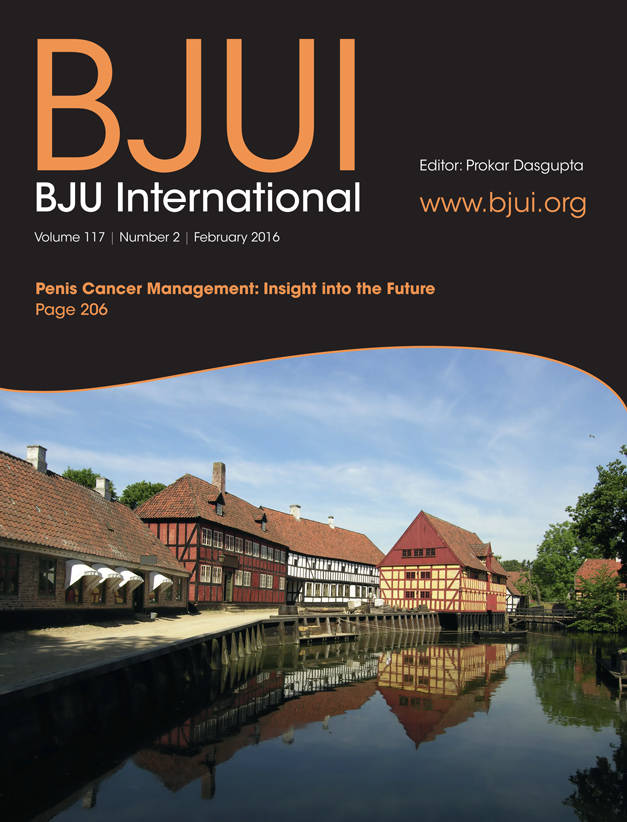
Editorial: Penis cancer management – insight into the future
The report of Jakobson et al. [1] assesses the results of the sentinel node procedure for penis carcinoma in Denmark. The sentinel node procedure was done in four university hospitals. In this geographically small country with little more than 5.6 million inhabitants and a case load of 50 patients with penis cancer per year, a distribution of care of patients with penis cancer over four hospitals seems reasonable at first sight.
The results show interesting elements. With a false-negative…

Video: DaPeCa-1 – Diagnostic Accuracy of SNB in Penile Cancer
DaPeCa-1: Diagnostic Accuracy of Sentinel Node Biopsy in 222 Penile Cancer Patients at four Tertiary Referral Centres -- a National Study from Denmark
Jakob K. Jakobsen*, Kim P. Krarup†, Peter Sommer†, Henrik Nerstrøm†, Vivi Bakholdt‡, Jens A. Sørensen‡, Kasper Ø. Olsen*, Bjarne Kromann-Andersen§, Birgitte G. Toft¶, Søren Høyer**, Kirsten Bouchelouche†† and Jørgen B. Jensen*
*Departments of Urology, **Pathology, ††Nuclear Medicine and PET-Centre, Aarhus…
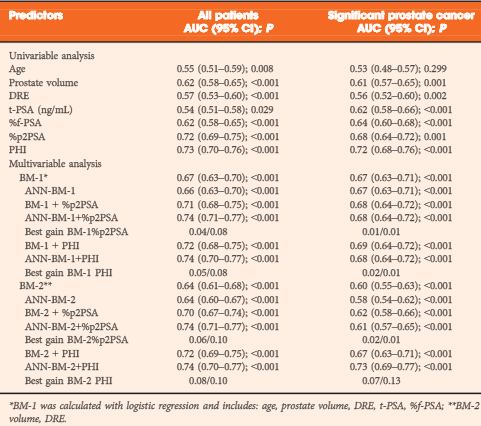
Article of the Week: Testing the diagnostic accuracy of %p2PSA and PHI
2 Comments
/
Every Week the Editor-in-Chief selects an Article of the Week from the current issue of BJUI. The abstract is reproduced below and you can click on the button to read the full article, which is freely available to all readers for at least 30 days from the time of this post.
In addition to the article itself, there is an accompanying editorial written by a prominent member of the urological community. This blog is intended to provoke comment and discussion and we invite you to use the comment…
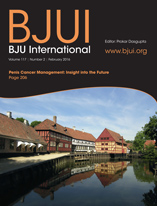
Editorial: %p2PSA and PHI improve diagnostic accuracy for prostate cancer
Serum samples from patients with prostate cancer (PCa) are measured routinely for total PSA (tPSA) and complexed PSA as a part of the diagnostic evaluation. In addition, a variety of molecular isoforms of the PSA molecule can be assayed, including free PSA (fPSA), %freePSA, [-2]proPSA, %[-2]proPSA and the new combined calculation, termed the Prostate Health Index (PHI), which is calculated using [-2]proPSA, fPSA and tPSA. The PHI was developed by Beckman Coulter immunoassays and is performed…
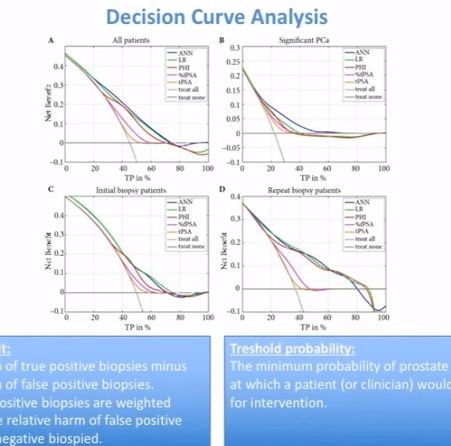
Video: The diagnostic performance of %p2PSA and PHI
The percentage of prostate-specific antigen (PSA) isoform [–2]proPSA and the Prostate Health Index improve the diagnostic accuracy for clinically relevant prostate cancer at initial and repeat biopsy compared with total PSA and percentage free PSA in men aged ≤65 years
Martin Boegemann*, Carsten Stephan†‡, Henning Cammann§, Sebastien Vincendeau¶, Alain Houlgatte**, Klaus Jung†‡, Jean-Sebastien Blanchet†† and Axel Semjonow*
*Department of Urology, Prostate Center,…

Article of the Week: Partial versus Radical Nephrectomy for T1 renal tumour
Every Week the Editor-in-Chief selects an Article of the Week from the current issue of BJUI. The abstract is reproduced below and you can click on the button to read the full article, which is freely available to all readers for at least 30 days from the time of this post.
In addition to the article itself, there is an accompanying editorial written by a prominent member of the urological community. This blog is intended to provoke comment and discussion and we invite you to use the comment…

Editorial: Minimally invasive surgery or nephron preservation for small renal tumours?
In the present issue of BJUI, there is an important study by Hadjipavlou et al. [1], summarizing radical (RN) and partial nephrectomy (PN) practice in the UK in 2012. Specifically, the authors reported the outcomes of ~1 800 patients undergoing either RN or PN for clinical T1 renal masses. Approximately 55% of the patients with cT1a tumours underwent PN, of whom 44% underwent minimally invasive PN. Conversely, in the cohort of patients with cT1b tumours, only ~19% received PN, of whom 33% underwent…

Video: T1 renal tumours: Partial versus Radical Nephrectomy
Partial versus Radical Nephrectomy for T1 renal tumours: An analysis from the British Association of Urological Surgeons Nephrectomy Audit
Marios Hadjipavlou, Fahd Khan, Sarah Fowler*, Adrian Joyce†, Francis X. Keeley‡, Seshadri Sriprasad and on behalf of BAUS Sections of Endourology and Oncology
Department of Urology, Darent Valley Hospital, Dartford Kent, *British Association of Urological Surgeons, London, †Department of Urology, St James’s University Hospital, Leeds,…
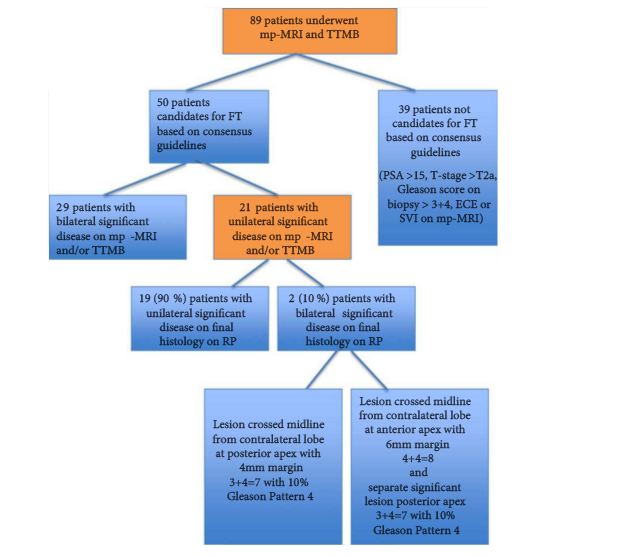
Article of the Week: Combination of mpMRI and TTMB of the prostate to identify candidates for hemi-ablative FT
Every Week the Editor-in-Chief selects an Article of the Week from the current issue of BJUI. The abstract is reproduced below and you can click on the button to read the full article, which is freely available to all readers for at least 30 days from the time of this post.
In addition to the article itself, there is an accompanying editorial written by a prominent member of the urological community. This blog is intended to provoke comment and discussion and we invite you to use the comment…

Editorial: Doubling our precision of risk stratification in early prostate cancer? Too good to be true?
It is difficult to over-estimate the enormity of the revolution involved in transitioning away from an organ-based system of care in prostate cancer (prostatectomy or radiotherapy to prostate cancer of any grade, number, location or volume) to one in which the target condition is defined and verified, and then subsequently treated with a margin. Since Hugh Hampton-Young undertook the first radical prostatectomy more than 100 years ago, an organ-based system of care has been the only plausible…
